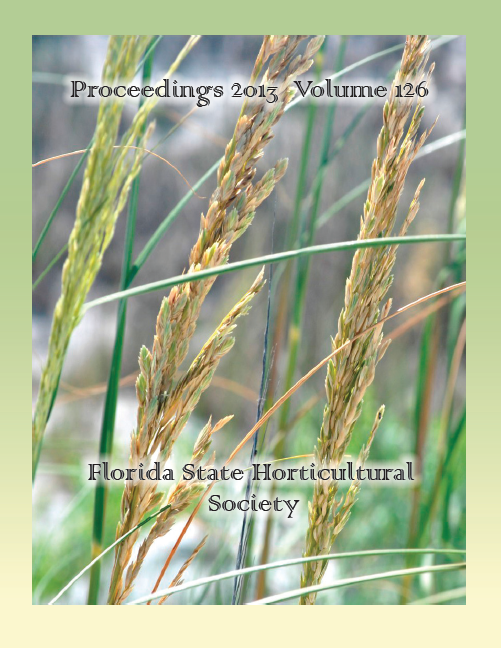Published 2013-12-01
Keywords
- Chamaesyce hyssopifolia,
- Cyperus croceus,
- Cyperus esculentus,
- Digitaria,
- Emilia fosbergii
- Ilex cornuta,
- Richardia,
- Viburnum odoratissimum,
- efficacy,
- herbicides,
- phytotoxicity,
- preemergence ...More
Abstract
Indaziflam is a new herbicide active ingredient with a unique mechanism of action (Herbicide Group 29). This cellulosebiosynthesis inhibitor is predominantly a preemergence herbicide. The purpose of this trial was to evaluate the weed control efficacy and crop safety of indaziflam applied around landscape shrubs. Weed-free plots around well-established dwarf Burford holly (Ilex cornuta Lindl. ‘Burfordii Nana’) and sweet viburnum (Viburnum odoratissimum Ker Gawl.) plants were sprayed with indaziflam 7.4% SC at rates of 7.35, 14.7 or 29.4 oz per acre (0.036, 0.071, or 0.143 lb a.i. per acre) or with water alone. Weed pressure was very high and the predominant weed species in the plots were hyssop spurge [Chamaesyce hyssopifolia (L.) Small], Baldwin’s flatsedge (Cyperus croceus Vahl), yellow nutsedge (Cyperus esculentus L.), crabgrasses (Digitaria sp.), Cupid’s-shaving-brush (Emilia fosbergii Nicolson), and Brazil and Florida pusley (Richardia spp.). Weed control increased with increasing indaziflam application rate in a predominantly linear manner. In the ilex plots, control fell off rapidly where the low label application rate had been used but was still good (>80%) at 8 weeks after treatment (WAT) in the plots treated at the high rate. Control was maintained longer in the viburnum plots, probably due to greater crop plant competition with the weeds. Good weed control was maintained for 8 and 12 weeks, respectively, at the medium and high applications rates. No phytotoxicity was detected on either crop at any time during this experiment.

